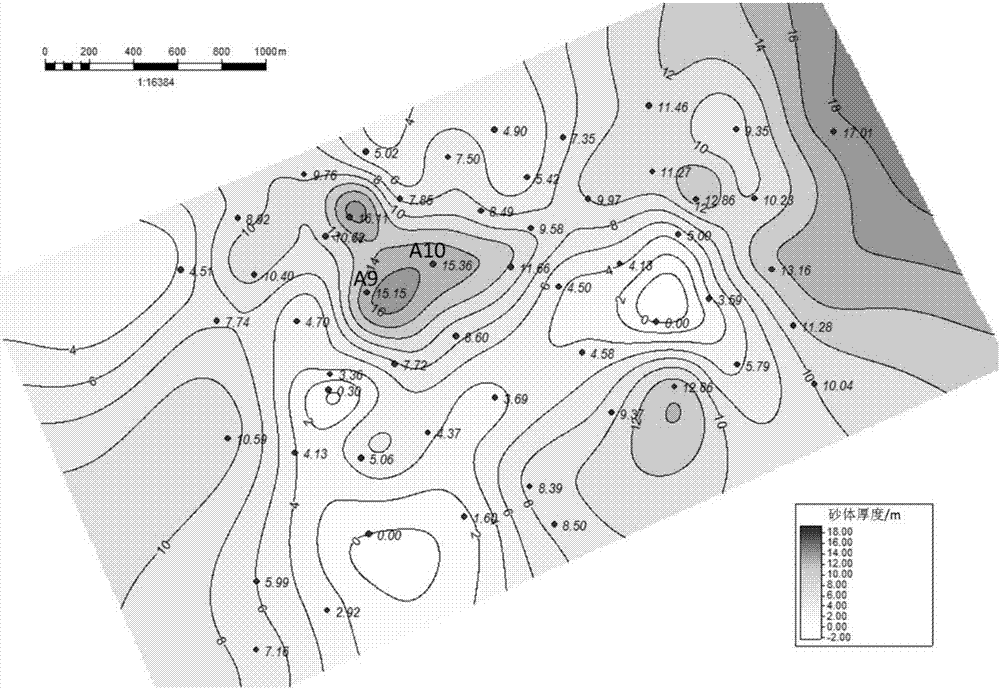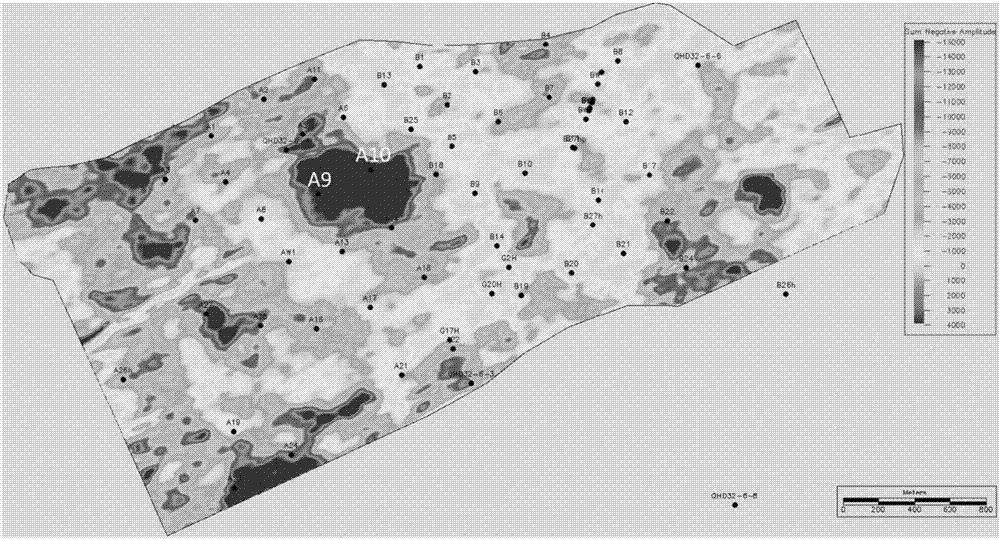Isochronal interface recovery method in last phase of mid-term deposition cycle of fluvial facies stratum
A sedimentary cycle and recovery method technology, applied in seismology, geophysical measurement, seismic signal processing, etc., can solve problems such as erosion damage, flooded mudstone interface does not have isochronism, and is difficult to use as isochronous strata correlation, etc., to achieve High precision, reduced ambiguity, and objective recognition results
- Summary
- Abstract
- Description
- Claims
- Application Information
AI Technical Summary
Problems solved by technology
Method used
Image
Examples
Embodiment Construction
[0024] The present invention will be described in detail below in conjunction with the accompanying drawings and embodiments.
[0025] The present invention proposes a method for recovering the isochronous interface at the end of the mid-sedimentary cycle of a fluvial strata, comprising the following steps:
[0026] 1) Identify the undercutting mark and determine the undercutting position of the later channel. The specific process is as follows:
[0027] When the position of the later channel incision meets the following four identification marks at the same time, this position can be determined as the position of the channel incision.
[0028] ①The channel sand body thickness increased significantly in the later period, which was greater than 1.5 times the average sand body thickness of this layer;
[0029] ②The shape of the logging curve corresponding to the channel sand body in the later stage is bell-shaped or box-shaped, and the bottom is abrupt contact;
[0030] ③ The ...
PUM
 Login to View More
Login to View More Abstract
Description
Claims
Application Information
 Login to View More
Login to View More - R&D
- Intellectual Property
- Life Sciences
- Materials
- Tech Scout
- Unparalleled Data Quality
- Higher Quality Content
- 60% Fewer Hallucinations
Browse by: Latest US Patents, China's latest patents, Technical Efficacy Thesaurus, Application Domain, Technology Topic, Popular Technical Reports.
© 2025 PatSnap. All rights reserved.Legal|Privacy policy|Modern Slavery Act Transparency Statement|Sitemap|About US| Contact US: help@patsnap.com



